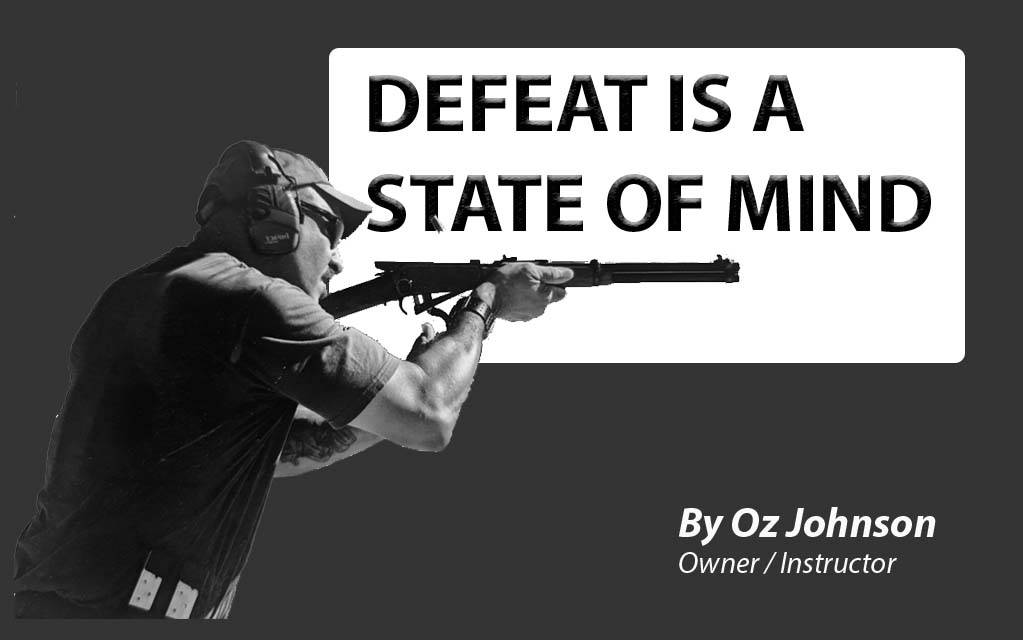During my interactions with students, I am frequently asked about what type of firearm should be carried for self-defense. When looking at that question, there are so many aspects that can be considered. Most people that I speak with regarding this question always mention comfort. Does whatever type of firearm and wherever they are carrying it, feel comfortable.
That is very important because if it’s not comfortable then most likely you won’t keep carrying it. If you’re looking at a scale from 1-10 with 10 being most important, comfort ranks about a 5 for me. With comfort comes the question where will you carry your firearm. When I carry, 90% of the time it’s concealed and in an appendix carry. This means the firearm is carried in front of my body, typically tucked into an appendix carry holster between my pants and my body. On that same scale, where I carry my concealed firearm ranks at a 9.
Why is where I carry it so important? Where I carry my firearm concealed is the same location where I spend hours on a weekly basis training with that firearm. This ensures that my draw of the firearm is instinctive and happens with muscle memory. The most important part of carrying a concealed firearm is being able to get that firearm out of the concealed position quickly. This can only happen with many hours of practice. Because I wear different clothes every day, I also practice this about 5-10 times before leaving my home. This routine allows me to practice with the clothes I am wearing that day, and it also warms up my brain for what might occur if I have to use that firearm in self-defense when I’m away.
What ranks a number 10 on the scale? In my opinion, the highest-ranking question you should ask yourself when considering what firearm to carry concealed, is, what firearm do you want to have if you get in a gun fight.
With the years of experience that I have carrying a firearm in Law Enforcement, and many of those years working plain clothes with my firearm concealed, I’ve always carried a full size semi-automatic pistol. That’s what I want to have if I get in a gun fight.
As a narcotics detective I carried a full-size .45cal Kimber 1911 or a Smith & Wesson M&P 9mm. Today it’s a Springfield Armory Prodigy 2011 with a dot sight. Those of you who know firearms might say, that’s a full-size heavy gun. Mostly with a 20-round magazine.
If I didn’t carry a firearm on my person, and a situation presented itself where I was about to need one to defend my life, what firearm would I want in that moment? That’s the main question that should be considered. The comfort, caliber, magazine round count, etc. etc. can be managed afterwards.
My appendix carry becomes very uncomfortable when I sit in my vehicle, so, I’ve attached gun magnets in my truck. Not only do the magnets create comfort while driving but it’s a better and quicker way to draw my firearm if I need it while seated in my vehicle.
Why do I want a full-size firearm in a gun fight? Yeah, bigger magazine means more rounds, that’s an easy one. When manipulating my firearm, class 1 malfunction, empty gun reloads, tactical reload, any other malfunction, it is much easier with a full-size frame vs. a compact gun. Some compact guns are so small, there’s no room to work.
Plus, my larger firearm, which has a longer barrel, is going to be more accurate at distance. Now, if you are not trained, you should never consider shooting beyond your capabilities. But, if you are trained, wouldn’t you want the firearm that would make that task easier?
I know there are a lot of options to how you can carry a firearm. Concealed carry purses, belly bands, shoulder holsters, but, before considering any of that, ask yourself what firearm do you want in your hand when and if you get in a gun fight. You are fighting for your life or the life of another.
NEVER STOP TRAINING!
Oz Johnson/Lead Instructor, NRA Certified
Karin Johnson/Operations Manager
JohnsonGroupTAC.com
JohnsonGroupTAC@gmail.com
602-410-7355





